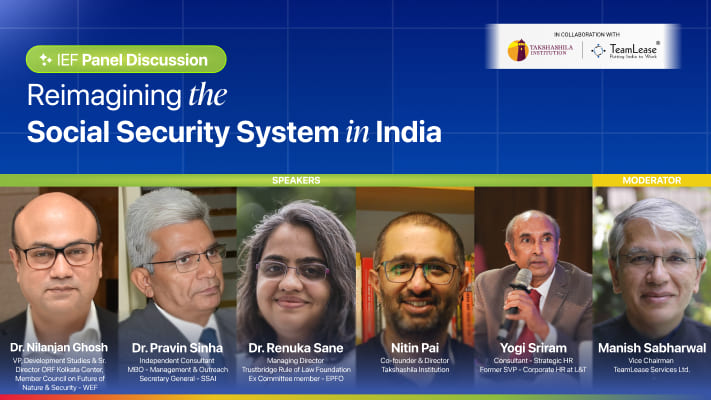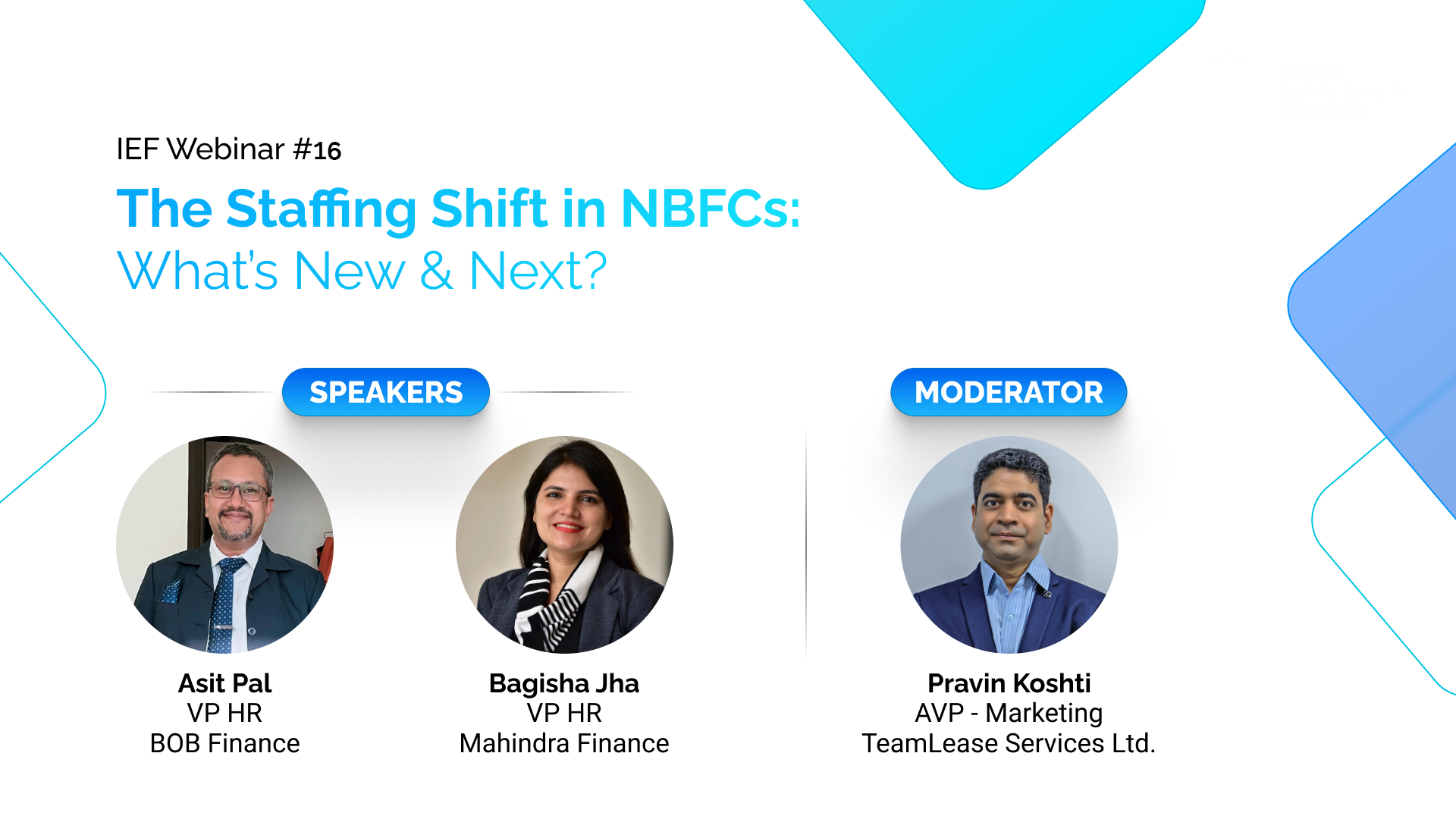As India marks its 78th Independence Day, the journey towards economic independence and self-reliance continues. The evolving landscape of work, driven by technological advancements and changing market dynamics, presents both challenges and opportunities. The need to bridge the skills gap and create employment opportunities in a digital age has never been more critical.
India Employer Forum brings together thought leaders, industry experts, and educators to discuss and formulate actionable strategies for bridging the skills gap and creating sustainable employment opportunities. This webinar focused on leveraging digital transformation, fostering innovation, and enhancing skill development to build a resilient and future-ready workforce.
In the closed-door webinar on 13th Aug 2024, eminent corporate leaders had a productive discussion in a 2-part series. The dialogue concerned the demand and supply gap for a skilled corporate workforce in India, especially in the manufacturing sector.
The webinar had five eminent industry experts who shared their views on India’s employment landscape. Subburathinam P, Chief Strategy Officer, TeamLease Services Limited moderated the sessions.
When asked about the demand-supply skill gap, Priyadarshi Pradhan, Head HR, Yazaki India said, “ I was going through a NASSCOM report, which compared the demand-supply gap between countries. Right now, the U.S. has the highest demand-supply gap, about 34% to 36%. The UK follows with a gap of about 30% to 32%. In comparison, India’s gap is much smaller. Experts globally position India as having a demand-supply gap of about 25%, and this is projected to stay between 24% to 27% over the next two to three years. This analysis, done by experts, indicates that India is a strong supplier of talent, not just domestically but for other countries as well. In the next two to three years, or even four years, India is at a pivotal moment. Right now, it’s seen as a hot market for talent globally.“
The second expert on the panel who spoke on the subject was Dileep Kumar Khandelwal, Head of Talent Acquisition, Amara Raja Group. He said, “From my experience, while there is a demand, I’d also say there is supply. However, the supply of the right talent with the required skills is where the gap lies. This is what gives rise to the perception of a demand-supply gap, but in reality, the issue is with the supply of skilled talent. That’s the real challenge we’ve been facing for many years. Even though the industry is growing and people are getting trained, we still feel the gap persists. This is why various initiatives from both the government and industry have been introduced to address this. There has to be a point where we can say that demand and supply are balanced.”
Additionally, our third panellist Vidya Sakpal, CHRO, Josts Engineering Co. said, “There is a demand-supply gap, especially now that we’re in the era of artificial intelligence. The gap lies in skills—what you learn and what you apply at work can be different. If you’re learning with the aid of digitalization, AI, and upgraded platforms, it can save time, improve productivity, and increase output in less time. This skill gap is evident, particularly in areas like digital marketing, project management, and cybersecurity, where the demand for skills is high. One of the issues I’ve encountered is inadequate training during academic programs. Many people are now working in practical settings without having received proper training. Government-led skill development initiatives are addressing this, but the gap is still there, and I am personally facing the same challenge.”
“As a manufacturer of IoT devices, I completely agree that there is a significant gap between the demand for skilled labour and the current capabilities of the workforce. Many people in the manufacturing sector still lack the necessary tech-savviness, which is concerning. Moreover, I’ve noticed that it’s not just a technological issue. Many individuals struggle with problem-solving. When faced with challenges, they often become stuck and don’t know how to find solutions. This highlights the need for workers to develop critical skills, such as time management and problem-solving abilities,” mentioned Ritu Gupta, COO, Trak n Tell.
The last speaker Nishant Kalra, CHRO, JTEKT India also had something interesting to say. He said, “We are currently facing a significant shortage of skilled manpower. Recently, I’ve noticed that organisations are relaxing their selection criteria, including educational qualifications, simply to fill positions. In many HR groups, I’m part of, it’s evident that companies are desperate for any available hands. Unfortunately, this is often due to a mismatch between the education people are receiving and the actual needs of the industry. Many candidates, whether certified or degree holders, are not meeting the required standards. To address this issue, my organisation initiated a program three years ago aimed at upgrading the skills of our workforce”. In conclusion, the discussion offered invaluable insights into the skill gap in the manufacturing industry.
View the entire sessions here:
IEF Webinar #12 | From Jobs to Skills: Shaping India’s Employment – Part Indscape
IEF Webinar #12 | From Jobs to Skills: Shaping India’s Employment Landscape – Part II





